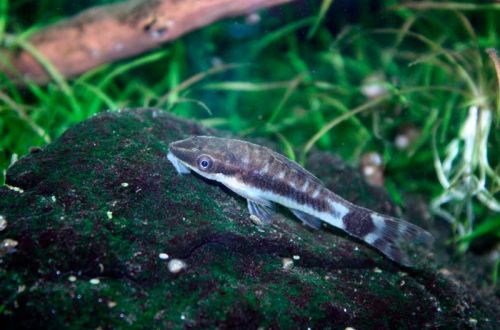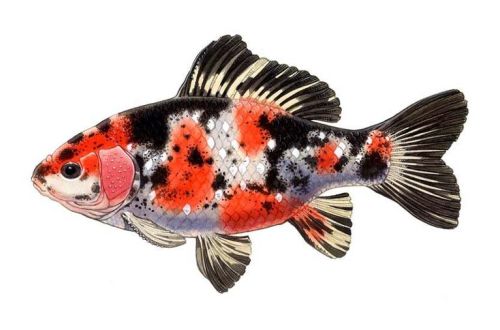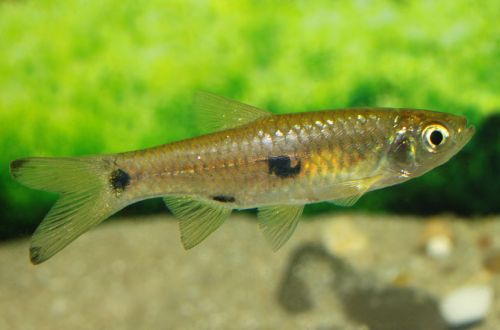
Otocinclus Hoppe
Otocinclus Hoppe, scientific name Otocinclus hoppei, belongs to the family Loricariidae (Mail catfish). The fish is native to South America. Inhabits the basins of the Madeira and Ucayali rivers, which in turn are part of the vast Amazon basin. They are found in shallow water among thickets of plants and flooded snags.

Description
One of the smallest representatives of the genus, reaching a length of about 3 cm. Outwardly, it is almost identical to Otocinclus macrospilus, which is somewhat larger (up to 4 cm), and at the base of the tail there is a double black spot, while Otocinclus Hoppe has a spot whole.
From the point of view of an ordinary aquarist, such differences can be considered insignificant, so both catfish are often supplied under the same name. The confusion in naming will not negatively affect the content – the fish live in an identical habitat.
Behavior and Compatibility
Peaceful flock look. It is necessary to purchase in groups of 8-10 individuals. For such miniature creatures, even harmless, but large and mobile species can be a potential danger. Calm fish of comparable size should be considered as neighbors.
Food
Algae are the basis of the diet. For this reason, Otocinclus are considered in the aquarium trade as an effective means of combating them.
Feed with specialized food for herbivorous fish, supplied in the form of tablets, granules, briquettes based on algae, such as spirulina. It is permissible to place pieces of green vegetables at the bottom (cucumber, zucchini, spinach, blanched peas, etc.). Ordinary dry food, as well as frozen or fresh brine shrimp, daphnia are also welcome. They will supplement the diet with essential vitamins and minerals.
It is worth noting that in a densely planted aquarium with natural driftwood, algae will likely grow in some quantity and serve as an additional food source.
Brief information:
- The volume of the aquarium – from 40 liters.
- Temperature – 21-26°C
- Value pH — 5.5–7.5
- Water hardness – 2–15 dGH
- Substrate type – any
- Lighting – subdued
- Brackish water – no
- Water movement is weak
- The size of the fish is about 3 cm.
- Nutrition – plant-based food, algae
- Temperament – peaceful
- Content group
Maintenance and care, arrangement of the aquarium
The optimal size of the aquarium for a flock of 8-10 fish starts from 40 liters. In the design, it is necessary to provide places for shelter from thickets of plants and snags. The rest of the decoration is not essential and is chosen at the discretion of the aquarist and the needs of other fish.
Otocinclus Hoppe is sensitive to water quality. Organic waste must not be allowed to accumulate, which can affect pH and dGH values, as well as lead to an undesirable increase in the concentration of some products of the nitrogen cycle.
Timely maintenance of the aquarium is the key to a balanced internal ecosystem. Mandatory maintenance procedures include weekly replacement of part of the water with fresh water, removal of organic waste and preventive maintenance of equipment.





